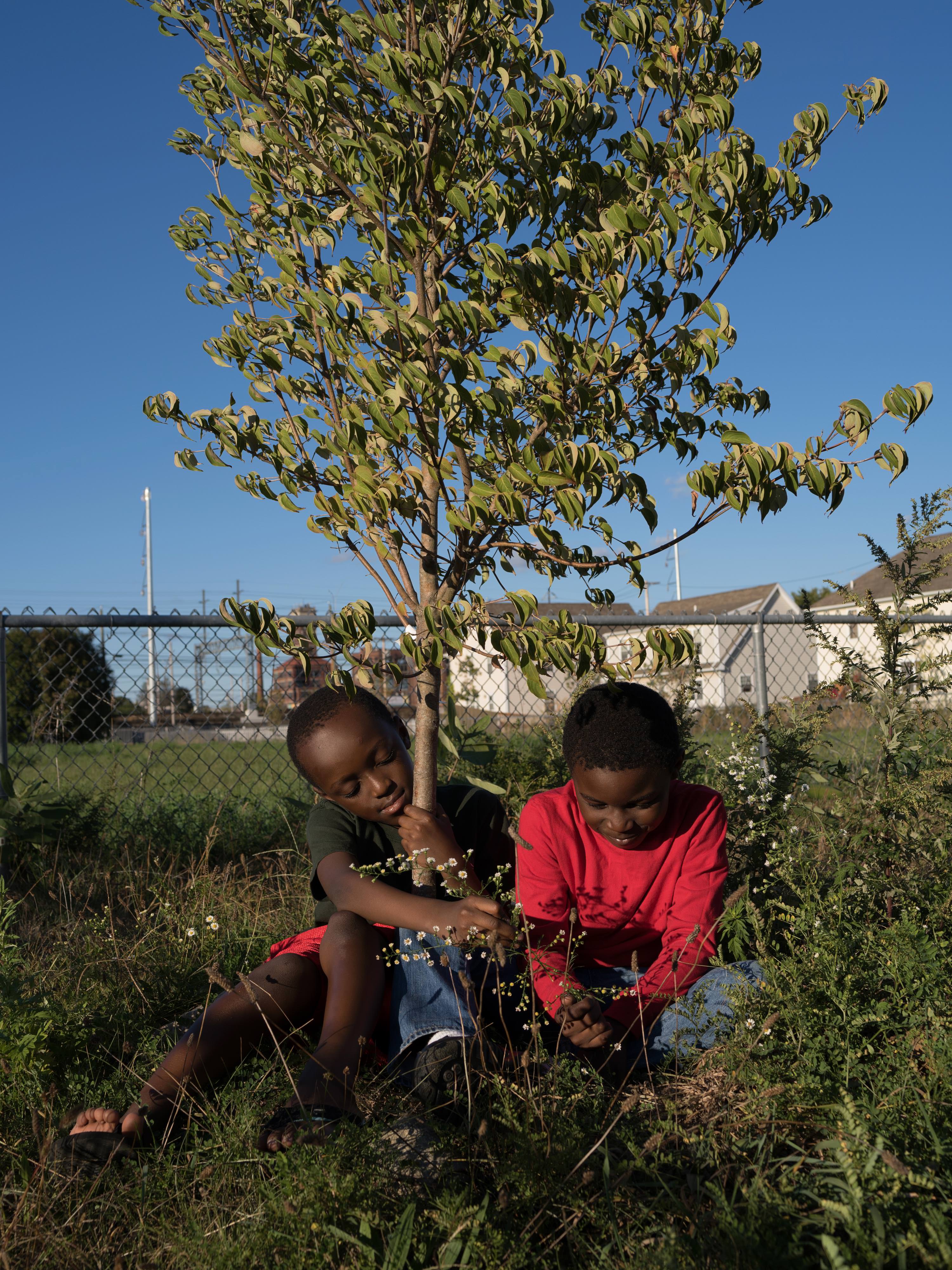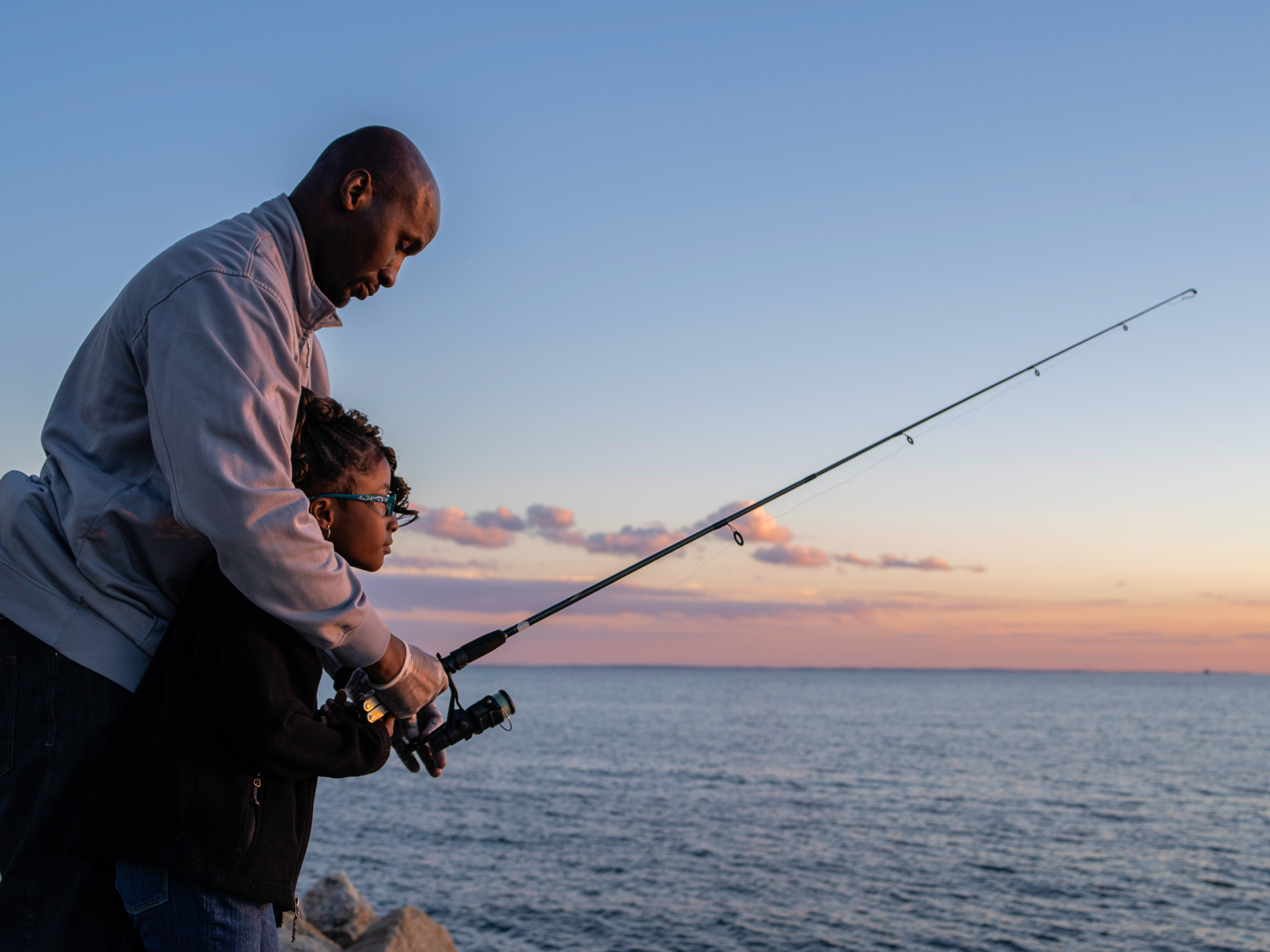Nature Every Day
How to hook kids on the great outdoors
By Jaime Gonzalez, Houston Urban Conservation Programs Manager, The Nature Conservancy | Spring 2019
It’s no secret that kids are spending more time inside playing on screens and less time outside playing in the woods. One recent study in the United Kingdom found that the average child there spends less time outdoors than the average prisoner. In Texas, where I work, schoolchildren get outside for unstructured play time just minutes a day. They’re in front of an electronic screen for more than seven hours a day.
Parents often explain this by saying kids today don’t want to go outside. But I disagree. I’ve taught thousands of children in my 20-year career as an environmental educator in Houston, and in my experience, youth today want the same things we wanted as children: real adventure and the opportunity to discover the world around them. Those kinds of experiences, however, are getting harder and harder to find outdoors, especially in our cities and suburbs. But it doesn’t have to be that way.

In cities around the world, TNC and like-minded partners are creating innovative programs that add more nature into the urban landscape.
In many metropolitan areas, it’s the outdoors itself that has radically changed. To be clear: I never went to a national park or a state park as a child. I never camped. But I did have outdoor adventures. I grew up on the outskirts of Houston during the late 1970s and early 1980s. The city was expanding, but there were still plenty of patches of prairies, woods and open space. There were big drainage ditches, where I went fishing for crawfish and even swimming after a good rain. If the ditches were only a little wet, they were full of frogs and other cool things. When they went dry, you could still find insects. The creativity that arose from these experiences helped level the playing field for me and get me hooked on nature.
When I tell my nieces and nephews stories about my childhood, they want to know why they don’t get to go fishing in ditches. The truth is, there’s little opportunity for that kind of exploration in and around cities today.
I started working as an environmental educator in 1998, teaching urban African-American and Latino kids how to fish in a city park. I’ve since worked all over the Houston metro area as a naturalist, teaching bilingual kids about their local ecosystem, and as a trainer of other outdoor educators. Over and over again, I have found that kids still love exploring nature—if we just make it available to them.
Today, so many of our neighborhoods are sterile. New yards hold little more than a manicured lawn and a single tree. Many of our parks have lost the wildflowers that attract bees and butterflies; the native shrubs that inspire games of hide-and-seek; and the scruffy wooded areas that hold downed branches and other impromptu building materials. Many urban and suburban kids today can’t even get to a park. According to the Trust for Public Land, the average large U.S. city devotes just 9.3 percent of land to parks, and only 65 percent of the average city’s population lives within walking distance of a park.
Meanwhile, we’ve replaced unstructured time spent in nature with highly structured activities, like piano lessons and soccer games, where the rules and the outcomes are predetermined by adults.
What happened? Kids haven’t changed. The world we created for them has changed. Kids need sticks to pick up, rocks to arrange, pill bugs to roll. Adults have taken most of those moving parts away—and it’s on us to put them back.

Quote
I never went to a national park or a state park as a child. But I did have outdoor adventures.
Over the past 12 years I have spent much of my timedoing just that: bringing more nature into Houston’s urban fabric by creating easily accessible “pocket prairies” in city neighborhoods and at local schools.
Since 2010, Houston has added more than 30 of these little public spaces. Some are just 50-foot rectangles. Others are bigger, between two and 11 acres. They all look like Houston used to look, with native tallgrasses and flowers. They are full of color. In the spring, the famed bluebonnets of Texas bloom. In the fall, the plants take on hues of purple and gold and pink. In winter, they turn to earth tones of copper and brown and yellow. Perhaps more important as far as kids are concerned, there’s always movement to catch the eye. And there’s sound: Walk by on any given day, and you can hear buzzing, chirping and bird songs over the hum of city traffic.

Quote
Even the tiniest of these wild spaces are kid magnets, because nature is the novel thing to them now. I’m fascinated with how small-scale nature can be and still be memorable for kids.
Even the tiniest of these wild spaces are kid magnets, because nature is the novel thing to them now. I’m fascinated with how small-scale nature can be and still be memorable for kids. My wife and I own an eighth-of-an-acre lot in Houston, and every year we plant our entire front yard in bluebonnets and other Texas wildflowers. Each spring, we find kids and parents exploring the flowers, taking pictures or just watching what I like to call “bee TV.” I have a neighbor who planted just three milkweed plants in a big flower pot. She and her daughter spend hours watching monarch butterflies come and go from those three plants.
I am now part of a Nature Conservancy team that is infusing more nature into cities to help tackle tough urban problems, from planting trees that cool summer temperatures to creating wetlands that absorb polluted stormwater. In Houston, we’re designing a program to use nature to help protect the Bayou City from floods and climate change, using native plants. And every time we add more nature to the city landscape, we’re adding back the prospect of adventure.
Such collective efforts are important, but what if each of us also committed to looking at urban nature in a fresh way? I think sometimes we adults get upset because today’s kids aren’t hiking or fishing or otherwise experiencing nature the way that we did as youngsters. But we don’t have to get so nostalgic about it. There’s no one right way to explore nature. We just need to focus on giving kids any nature-based experience, every day. Yellowstone National Park is an awe-inspiring place, but a patch of wildflowers on the way to school can ignite a child’s imagination just as easily.

Quote
When I drive across the city, I don’t see alleys, parking lots and abandoned buildings. I see empty spaces waiting to be wild again. It’s like a blank canvas.
So go ahead and put a few plants outside your door. Make an empty lot safe for kids to explore. Install a little meadow between the city’s soccer fields. It doesn’t have to be gigantic or pristine. It can be small. It can be rough. It can even be a little risky.
These days, when I drive across the city, I don’t see alleys, parking lots and abandoned buildings. I see empty spaces waiting to be wild again. It’s like a blank canvas.
As conservationists, we should be taking advantage of nature’s novelty to get more kids hooked on exploring outdoors. Electronic screens will always be a temptation, but we can balance those indoor activities by putting nature back into young people’s daily routines. Doing so improves their health, their creativity, their self-confidence. And it helps nature: Today’s kids will be the next stewards of the natural world. Let’s help them learn to love it.
Get the Magazine
Sign up to become a member of The Nature Conservancy and you’ll receive the quarterly print edition of the magazine as part of your membership.
